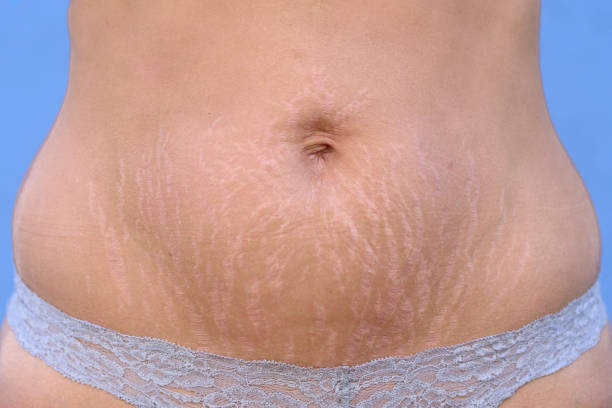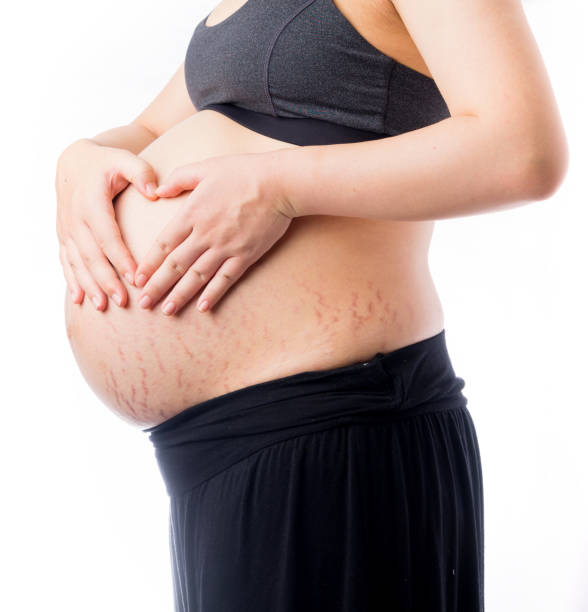The quest for radiant, hydrated skin can lead down many a path, from serums packed with exotic ingredients to elaborate multi-step routines. But sometimes, the most transformative secrets lie in the simplest of steps. Enter “slugging,” a surprisingly straightforward but effective technique that’s sending ripples through the skincare world.

WHAT IS SLUGGING?
Slugging is a skincare technique that has gained popularity, especially through social media platforms like TikTok. It involves applying a thin layer of petroleum jelly, such as Vaseline, to the entire face as the final step in a nighttime skincare routine. This practice is called “slugging” because the shiny and smooth appearance it gives to the skin resembles that of a gastropod, like a snail or slug. The petroleum jelly acts as a thick occlusive, helping to lock in moisture and prevent water loss from the skin.
The trend has roots in the long history of Vaseline, which has been used for over 140 years in various beauty applications, such as improving diaper rash, healing cuts and burns, and moisturizing the skin.
In recent times, slugging has experienced a resurgence, particularly in Korean beauty, where it is known as “chok chok,” emphasizing the goal of achieving a deeply moisturized and dewy complexion.
THE POTENTIAL SKIN BENEFITS OF SLUGGING
PREVENTS WATER LOSS
Occlusives play a crucial role in slugging by creating a protective barrier on the skin’s surface. This barrier serves as a shield that locks in moisture and prevents transepidermal water loss (TEWL). Transepidermal water loss is when water escapes from the skin into the surrounding environment, leading to dryness and dehydration. The occlusive layer, often formed by thick substances like Vaseline, acts as a seal, keeping the water trapped within the skin.
In more scientific terms, occlusives, such as Vaseline, function by creating a physical barrier that limits the evaporation of water from the skin’s surface. This process is essential for maintaining optimal hydration levels in the skin. By preventing excessive water loss, occlusives contribute to a healthier and more moisturized complexion. The shiny appearance associated with slugging is a visible indication of this occlusive action, showcasing the effective sealing of moisture for a smoother and well-hydrated skin surface.
REPAIRS THE SKIN BARRIER
Petrolatum, like Vaseline, has special properties that can make your skin feel better. It works as an emollient, which means it helps to soothe and soften the skin. When you put petrolatum on your skin, it doesn’t just feel nice; it also helps to increase the moisture in your skin.
Scientists have looked into this, and their research shows that petrolatum can quickly repair damage to the skin’s protective barrier. This barrier is like a shield for your skin, and when it’s damaged, your skin can become more sensitive and lose moisture. Using petrolatum helps to fix this damage right away, making your skin feel smoother and more comfortable. So, when you apply products with petrolatum, like Vaseline, you’re not just making your skin soft, you’re also giving it a hand in repairing itself.
REDUCES SIGNS OF AGING
The moisturizing effects of petrolatum, such as those found in products like Vaseline, go beyond just making your skin feel soft. These effects can contribute to a smoother and brighter appearance. When your skin is well-hydrated, it tends to look more even and vibrant. The hydration provided by petrolatum can also have a positive impact on the signs of aging.
Fine lines and wrinkles can become less noticeable when the skin is adequately moisturized. The plumping effect from increased hydration can temporarily smooth out the skin’s surface, making those lines appear less prominent. In this way, the regular use of petrolatum-based products can aid in reducing the visible signs of aging, leaving the skin looking not only softer but also contributing to a more youthful and radiant complexion. So, besides feeling good, using petrolatum can give your skin a boost in looking smoother, brighter, and less marked by fine lines and wrinkles.
DOES SLUGGING HAVE ANY SIDE EFFECTS?
Generally, slugging is considered a safe and straightforward skincare practice for many people. However, as with any beauty routine, individual skin types and conditions can vary, and it’s essential to be aware of potential side effects.
For some individuals, using thick occlusive substances like Vaseline for slugging may lead to clogged pores, especially if they are prone to acne or have oily skin. The occlusive nature of these products can create a barrier that traps sweat, oil, and dead skin cells, potentially causing breakouts. If you have sensitive or acne-prone skin, it’s advisable to perform a patch test on a small area before applying petroleum jelly to the entire face.
Additionally, if you have respiratory issues or allergies, the use of heavily scented or formulated petroleum jelly products might trigger adverse reactions. Opting for fragrance-free and hypoallergenic options can help minimize the risk of irritation.
While slugging is generally well-tolerated, it’s crucial to incorporate it into your skincare routine in moderation. Over-reliance on occlusive products may disrupt the natural balance of the skin over time. If you experience any redness, itching, or discomfort after slugging, it’s wise to discontinue the practice and consult with a dermatologist.
As with any skincare trend, individual experiences may vary, and what works well for one person may not be suitable for another. Paying attention to your skin’s response and adjusting your routine accordingly is key to ensuring a positive and effective skincare experience.
HOW TO SLUG YOUR FACE STEP-BY-STEP
HERE’S THE RIGHT WAY TO DO
Regardless of what product you choose, it’s important to start with clean skin. Afterward, apply a thin layer of hydrating moisturizer before sealing it with your chosen occlusive. Some recommend skipping the moisturizer and going straight to the petrolatum-based product, but that may not be ideal, especially if your skin is very dry, as the occlusive may trap in that dryness.
If you’re using any prescription medications on your skin, be careful with occlusives, as they could intensify the medications’ effects. Strong ingredients like AHAs, vitamin C, and retinoids should also be avoided. Locking in these potentially irritating ingredients could make your skin more sensitive and compromise its moisture barrier.
Slugging might not be suitable for all skin types, but for those with dry and irritated skin in need of some tender loving care, it can effectively seal in hydration and aid in the healing process.
A sTEP-BY-STEP GUIDE TO SLUGGING
Step 1: Start by cleansing your skin using a gentle hydrating cleanser.
Step 2: After cleansing, when your skin is still a bit damp, apply a thin layer of Vaseline to your face and neck.
Step 3: Leave it on overnight while you sleep.
In the morning, the last step is to wash your face with plain water.
If you’re worried about Vaseline getting on your pillow, you can try slugging during the day instead. It’s like wearing a hydrating mask. Keep in mind that makeup might not stick well, so daytime slugging is great for a relaxed day at home when you don’t mind a more laid-back look.
INCORPORATING SLUGGING INTO SKINCARE ROUTINE
You can easily add slugging to your skincare routine, but there are some important things to consider when using a thick occlusive product along with treatment creams.
If you apply treatment cream after slugging, it might prevent active ingredients from getting into your skin. Certain ingredients like retinol and retinoids (tretinoin) may struggle to go through a thick moisturizing layer.
On the other hand, applying treatment cream before slugging could lead to skin irritation. Dermatology experts usually recommend avoiding putting active ingredients under a heavy layer of Vaseline to prevent irritation.
How often you choose to slug is a personal decision. On slug days, it’s a good idea to skip exfoliating creams and instead use a gentle, hydrating cleanser for the best results.
WHAT’S THE BEST PRODUCT TO USE FOR SLUGGING?
LANOLIPS 101 MULTI-PURPOSE OINTMENT
Lanolin works wonders for your skin. This highly moisturizing and naturally derived oil mimics the skin’s natural oils and can retain up to 400% of its weight in moisture. It also forms a breathable barrier on the skin. Lanolip’s all-purpose ointment uses 100% ultra-grade lanolin in its occlusive formula, making it ideal for slugging and delivering all the benefits for your skin.

COSRX SNAIL MUCIN ESSENCE
A genuine slugging experience wouldn’t be complete without real snail mucin, a beloved ingredient in Korean skincare known for its promises of enhanced hydration and better skin texture. Cosrx’s Advanced Snail Power Essence is a widely popular product, containing a concentrated 96% of mucin filtrate. This regenerative serum is designed to be applied before your regular occlusive slugging products, adding an extra boost to your skincare routine.

CERAVE HEALING OINTMENT
Similar to other dermatologist-favored offerings from CeraVe, this smooth ointment, based on petroleum, includes three distinct ceramides. These ceramides are crucial building blocks necessary for maintaining a healthy skin barrier. Additionally, the formula incorporates hyaluronic acid, a fundamental ingredient known for its ability to keep the skin moisturized and looking full.

SKINCEUTICALS HYDRA BALM
Apart from using pure petroleum, SkinCeuticals’ version of the protective balm incorporates aloe and bisabolol to provide a soothing effect on the skin. This ointment not only helps in reinforcing the skin’s natural lipid barrier but also brings the added benefits of aloe and bisabolol for extra comfort.

AQUAPHOR ADVANCED THERAPY OINTMENT
Aquaphor’s beloved skin protectant goes beyond mere petroleum in its formulation. It blends lanolin, a deeply moisturizing emollient, with glycerin and provitamin B5. These additional ingredients serve as humectants, attracting moisture into the skin and preventing it from evaporating, enhancing the overall hydrating effect.

FAQ
1. How often should you do slugging?
2-3 times per week.
2. Do I sleep with slugging?
Yes, slugging involves applying an occlusive like petroleum jelly or Vaseline to your face before bedtime and leaving it on overnight to lock in moisture and promote skin hydration.
3. Can I slug over niacinamide?
Yes, you can slug over niacinamide.
4. Who should avoid slugging?
Individuals with acne-prone or oily skin should exercise caution with slugging, as it may lead to clogged pores.
CONCLUSION
Sugging helps to lock in moisture, promote hydration, and contribute to smoother, more radiant skin. While it may not be suitable for everyone, particularly those with acne-prone or oily skin, incorporating slugging with caution and adapting it to individual preferences can provide a simple yet effective approach to achieving well-hydrated and nourished skin.






